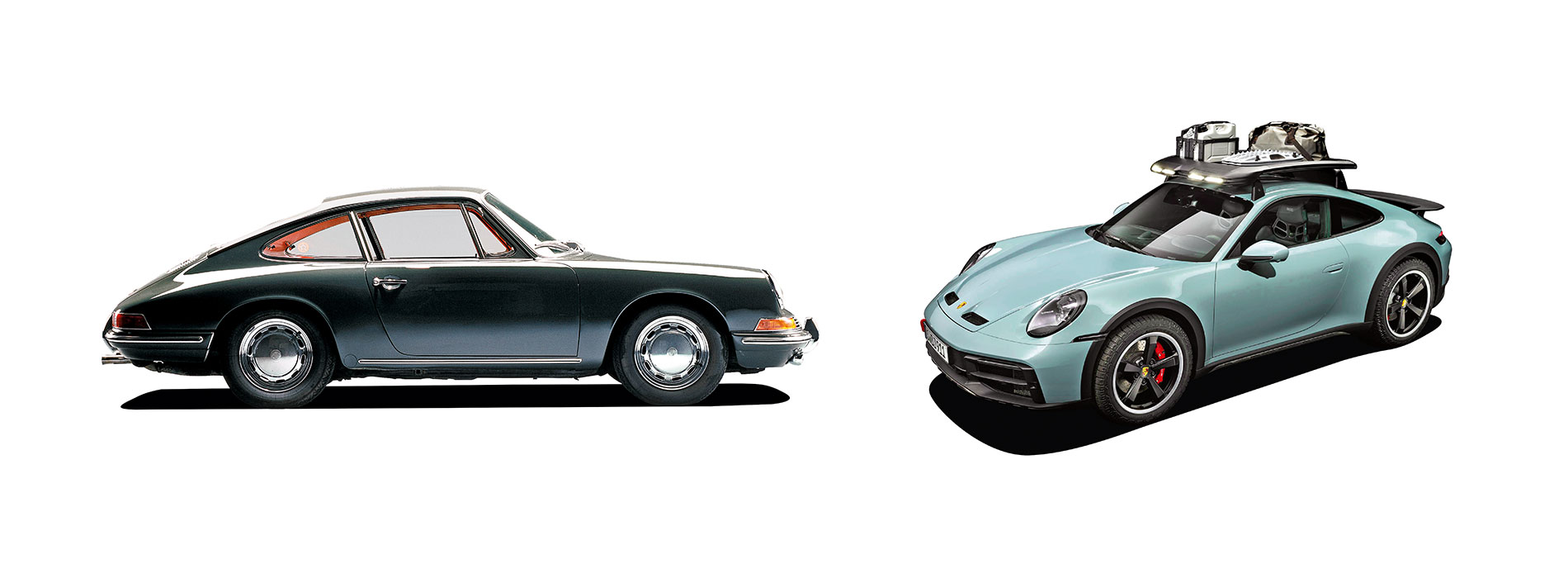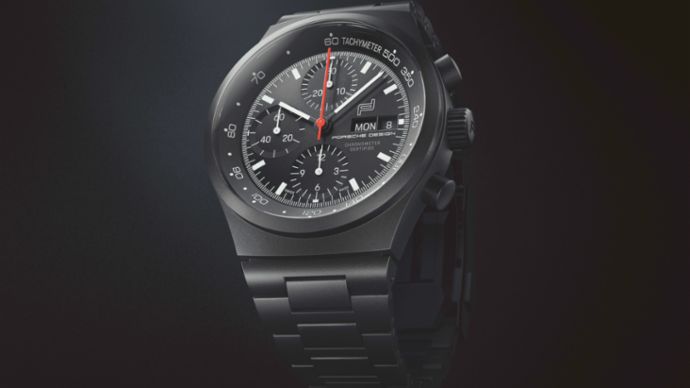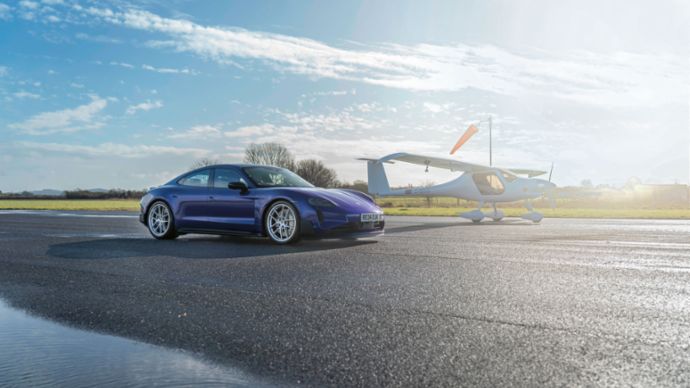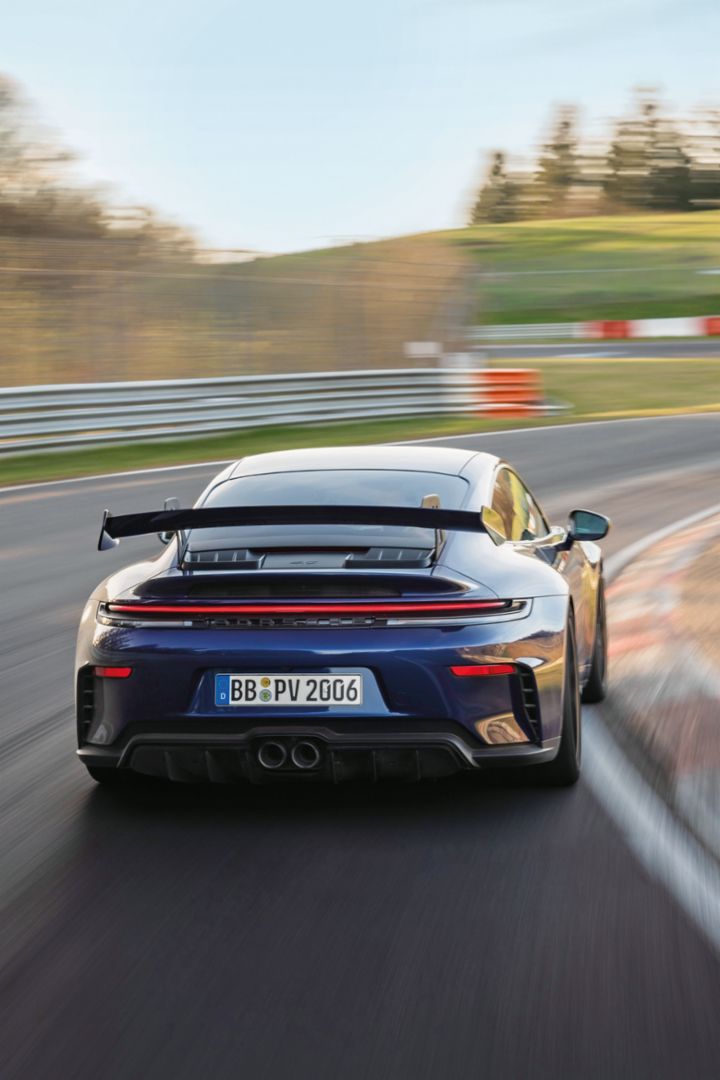911 × 8
The 911 has become more diverse and exciting from one decade to the next. Once the only style available, the Coupé was soon joined by additional body and engine variants. Much of what was introduced in the 1960s and 1970s, including the Targa and RS models, is still around to this day, demonstrating the unparalleled continuity of the 911. 60 years of the 911, eight model generations: a selection of the most important derivatives.
Birth of an Icon
Initially introduced as a 901 at the International Motor Show (IAA) in Frankfurt in 1963, a fully redesigned Porsche sports car is launched as the 911 (image) in 1964, marking the beginning of a success story like no other in automotive history. The “Targa” celebrates its premiere at the IAA in 1965. What was initially developed as a safety cabriolet to fulfill the approval requirements in the US is ultimately a huge success – and the next trademark of the 911. The lightweight, 960-kilogram, sports 911 Carrera RS 2.7 with its signature “ducktail” follows in 1972. With its approximately 154 kW (210 PS) six-cylinder engine, the limited-production model can reach speeds of up to 245 kmh.
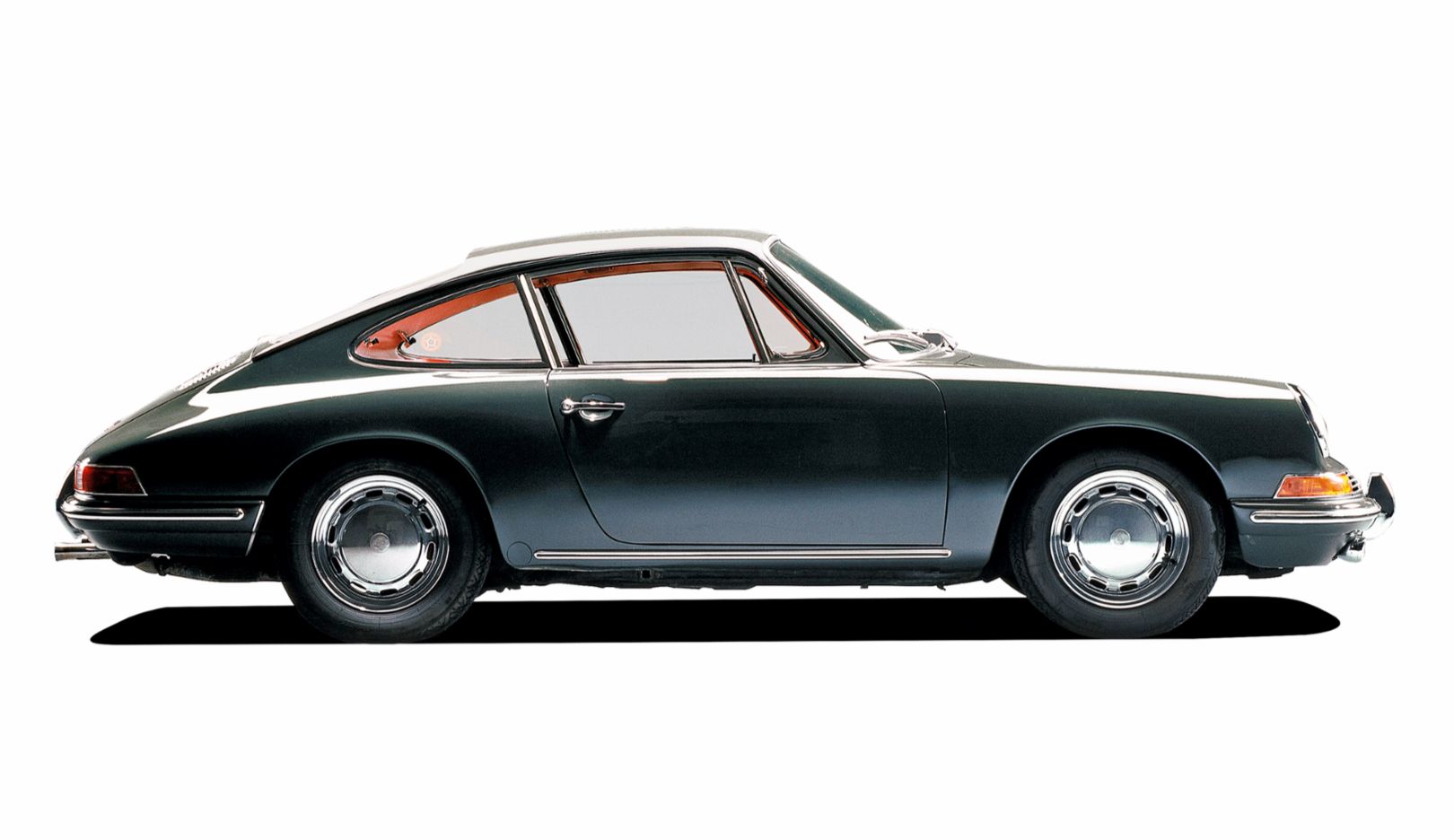
Enduring Bestseller
In 1974, Porsche uses turbocharging in a series production car for the first time ever to increase performance and efficiency. The unveiling of the Turbo Coupé with three-liter engine and up to 191 kW (260 PS) (image) – depending on the market –is a global sensation. The turbo engines will also appear in future generations of the top models. In 1982, a full-fledged convertible with soft top is introduced for the first time in a long time at the Geneva International Motor Show in the form of the 911 SC Cabriolet. The Targa is still available. A turbo-look speedster variant based directly on the tradition of the 356 Speedster from the 1950s hits the scene in 1989. Powered by the 170 kW (231 PS) engine of the Carrera 3.2, the model is also available with a narrow body in export markets such as the US.
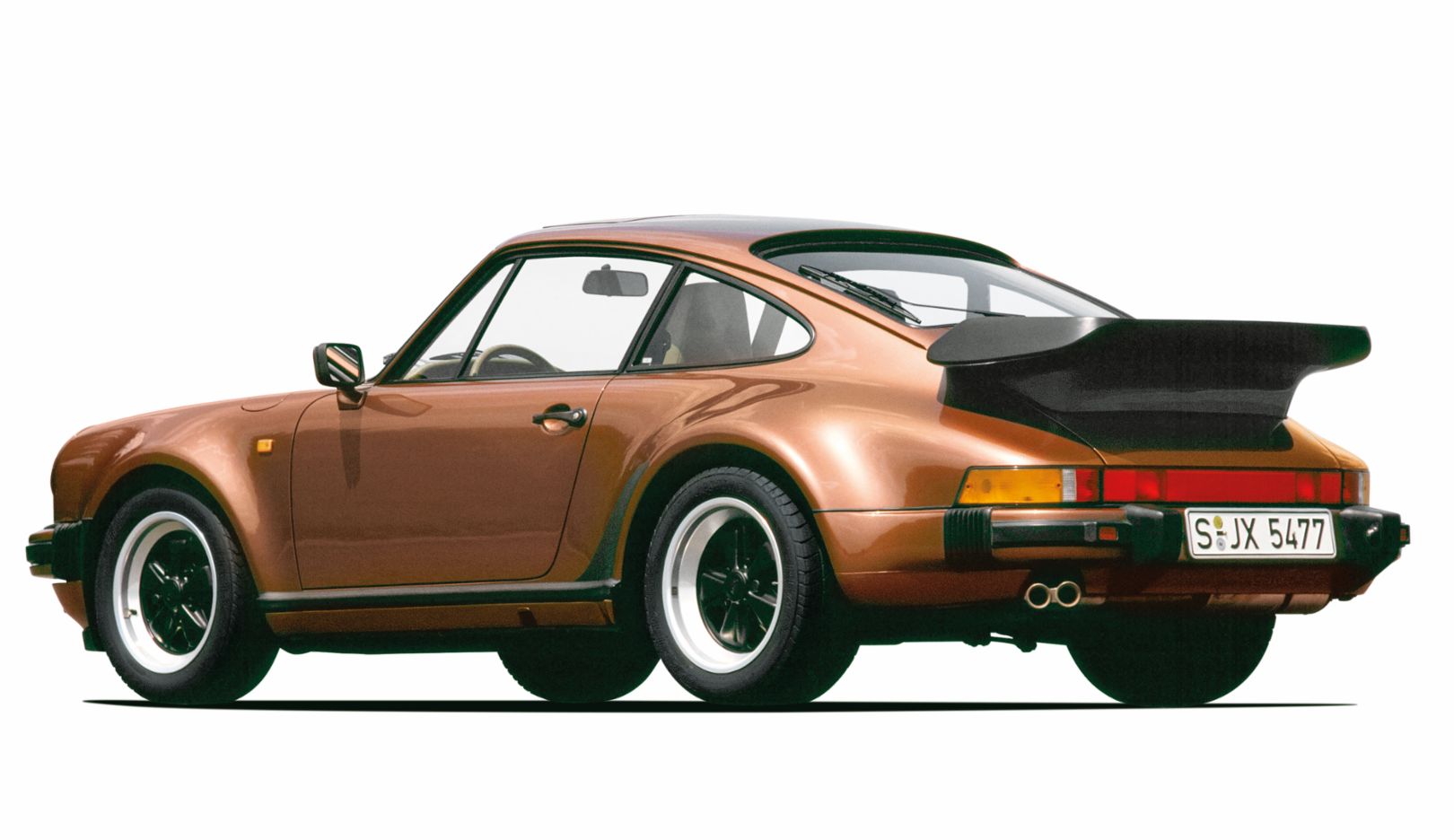
Classic Modernity
In 1989, on the 25th anniversary of the 911, the Porsche 911 Carrera 4 with all-wheel drive, presented in November 1988, heralds a new generation. A technical innovation that has proven its worth in rally sport. The driving characteristics of the sports car with a rear engine achieve new dimensions. ABS, power steering, and (as of 1991) airbags are now standard. The RS variant returns as a “lightweight” model with the Carrera RS in 1992 and is introduced at the Motor Show in Birmingham. The RS America is available to customers in the US from 1993. Around a hundred 911 Carrera RS 3.8 models (image) are produced for use in GT races in 1993. The lightweight turbo-look body boasts an adjustable two-wing rear spoiler.
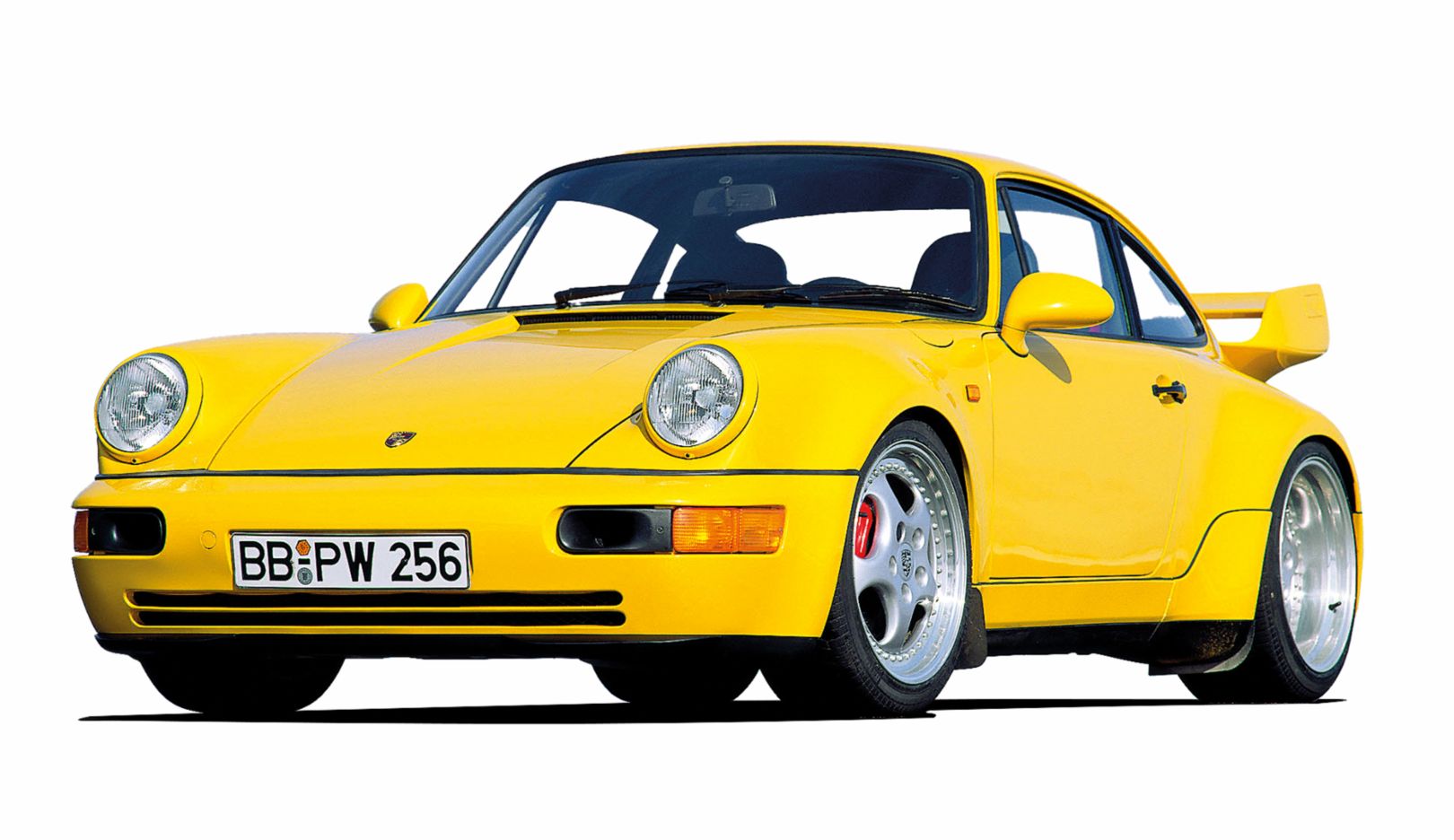
The Last Air-Cooled Model
The 993 generation is introduced at the IAA in Frankfurt in 1993. In 1995, the Turbo, with its 3.6-liter twin-turbo engine, all-wheel drive, and six-speed transmission, celebrates its premiere. The turbocharged 911 GT2 is introduced in the same year and is the first GT model developed for motorsport. The Targa (image) makes its debut at the IAA in 1995. Rather than a bar, it features a large glass roof that slides back under the rear window for top-down driving.
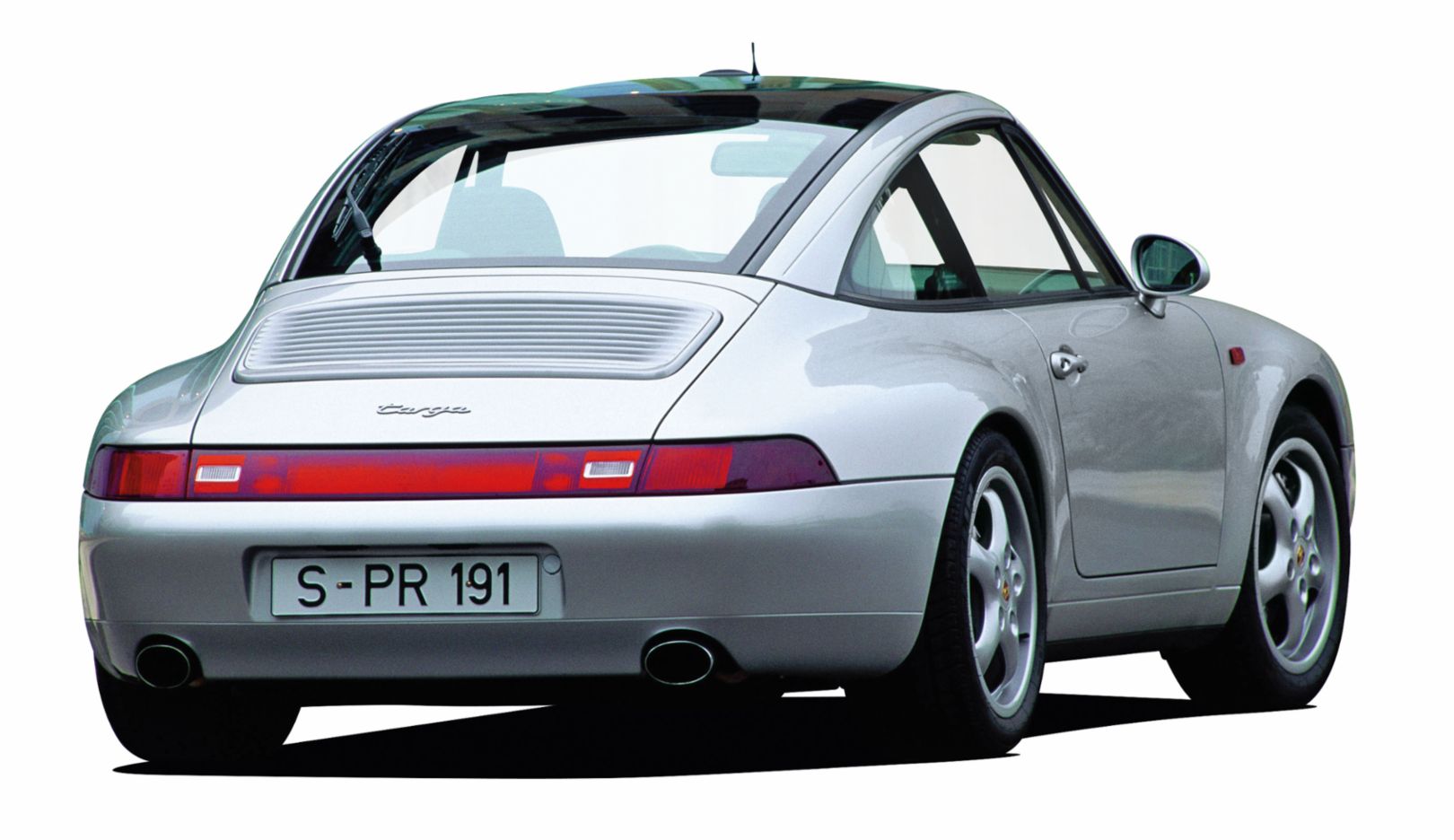
The Revolutionary
A historical watershed moment occurs in 1997 when Porsche presents the first model with water-cooled engine in the form of the fifth 911 generation, making the 996 the model upon which all subsequent generations are based. The model is available as a Coupé and Cabriolet (image). The 911 GT3 is presented as the successor of the 911 Carrera RS at the Geneva International Motor Show in 1999. Introduced in 2001, the new GT2 boasts a 340 kW (462 PS) twin-turbo engine, making it the most powerful 911 of its time. Unlike the turbo model, the GT2 features rear-wheel drive. The air conditioning, radio, and other comfort features are removed from the series and light sports seats are installed to secure the low weight necessary for racing.
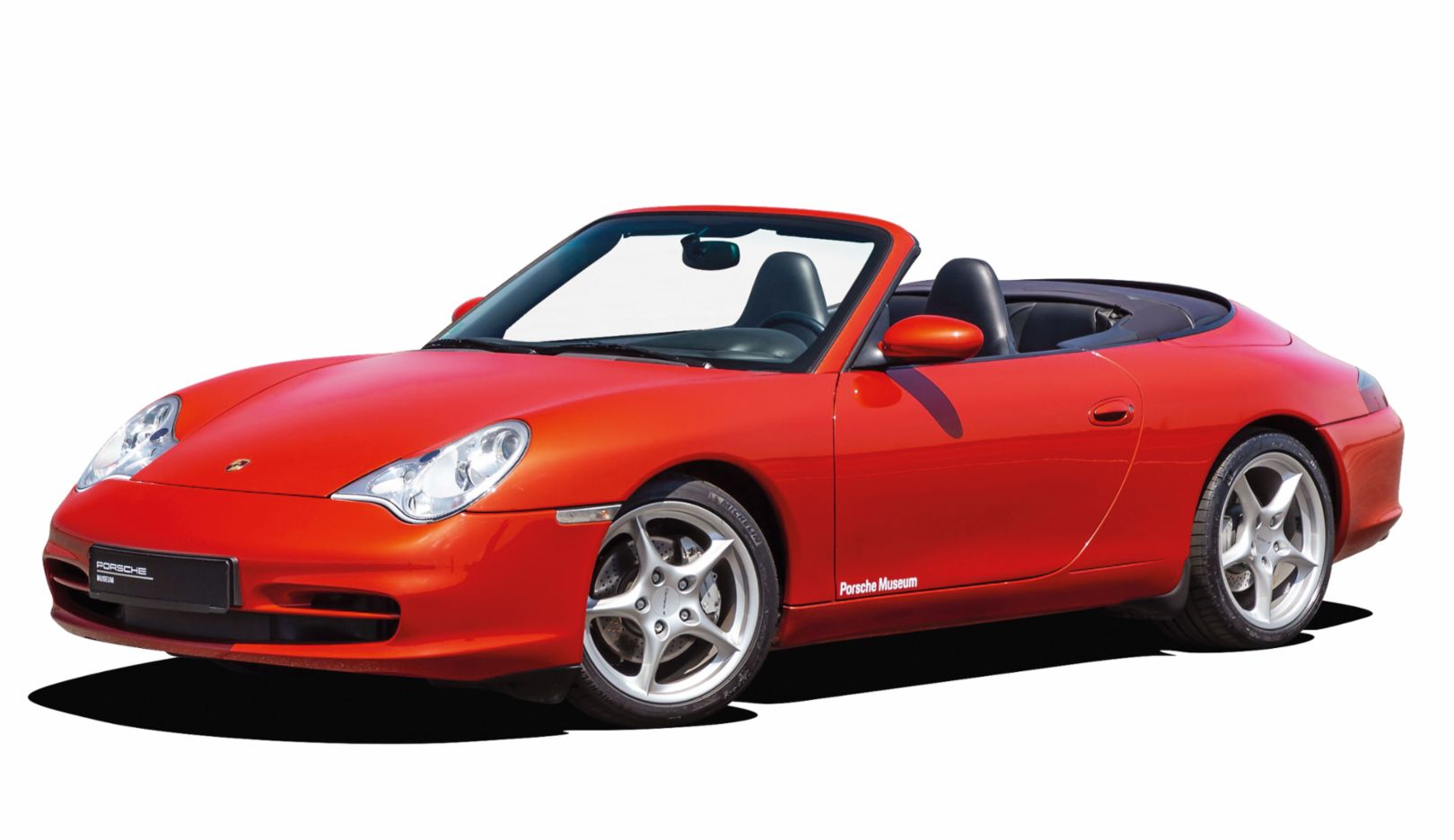
The GTS Returns
The 997 generation is introduced in 2004. The sport classic celebrates its premiere in 2009 and, one year later, hits the market as one of the most popular special models in history. Limited to 250 vehicles, the 911 features a fixed double-dome roof as well as a rear spoiler reminiscent of the “ducktail” of the 911 Carrera RS 2.7. Introduced to the 911 model range in 2010, the Carrera GTS delivers 300 kW (408 PS) and is available as a Coupé and Cabriolet with a wider body at the rear. The GTS models are a success and are now available in just about every Porsche series. Launched in 2011, the 911 GT3 RS 4.0 (image) is the crowning glory of the 997 generation and, with 368 kW (500 PS), the most powerful 911 with naturally aspirated engine of its time. Despite its racing equipment, the vehicle is approved for use on the road.
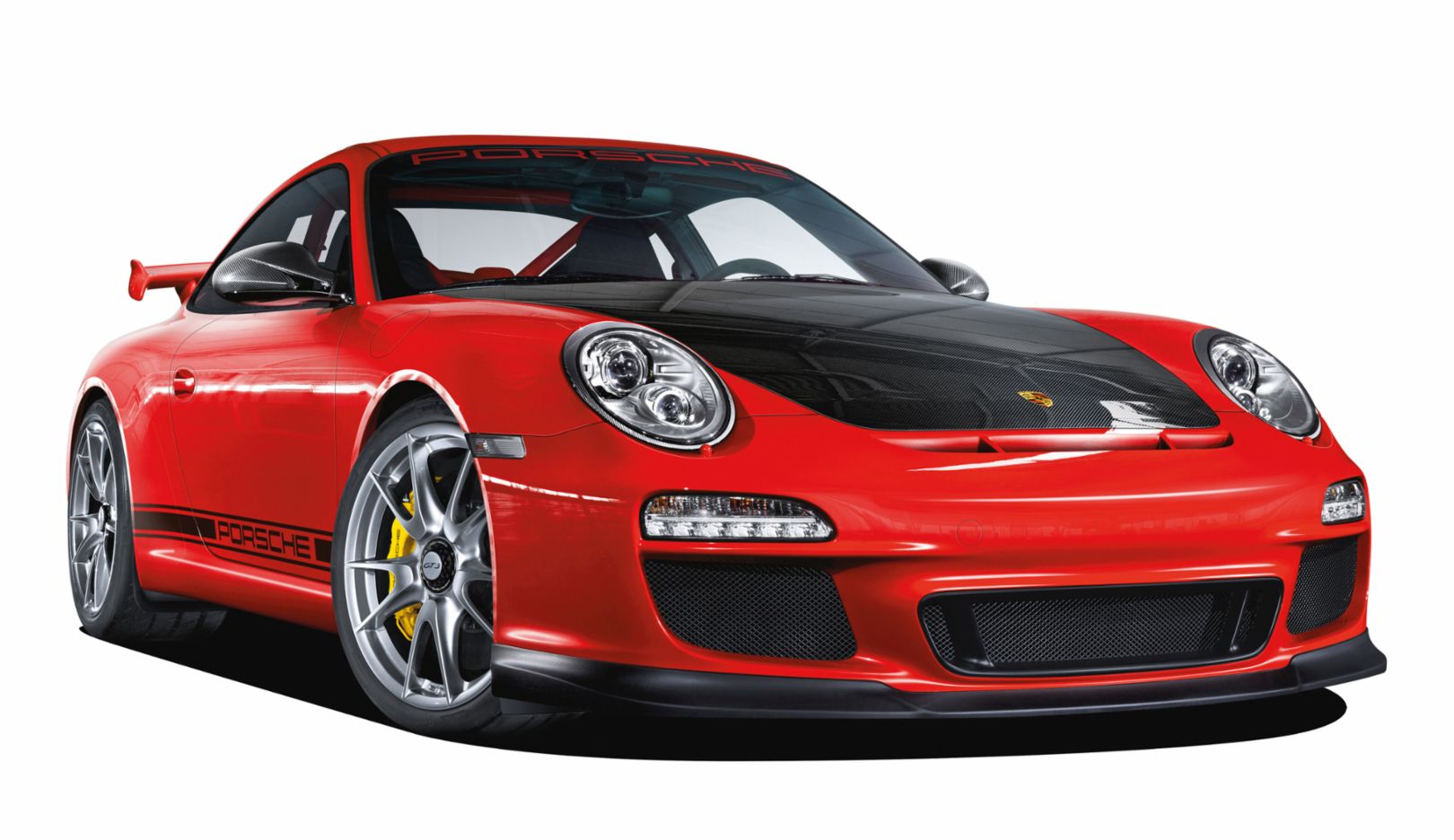
Performance and Efficiency
A special model featuring a red “50” next to the model name at the rear is launched in 2013 to mark the 50th anniversary of the 911, with both the interior and exterior reminiscent of the early 911 cars. At the Detroit Motor Show in 2014, Porsche presents the new 911 Targa (image) with an innovative roof construction inspired by the classic Targa bar. In 2015, the 911 Carrera and 911 Carrera S come with a turbo engine for the first time rather than a naturally aspirated engine, which improves power and efficiency in particular. Porsche breathes new life into the puristic 911 variant with the 911 Carrera T in 2017, based on a concept of lighter, ultra-sporty equipment. The “T” stands for “Touring” and originates from the homologation of the 911 T as a touring car in 1968.
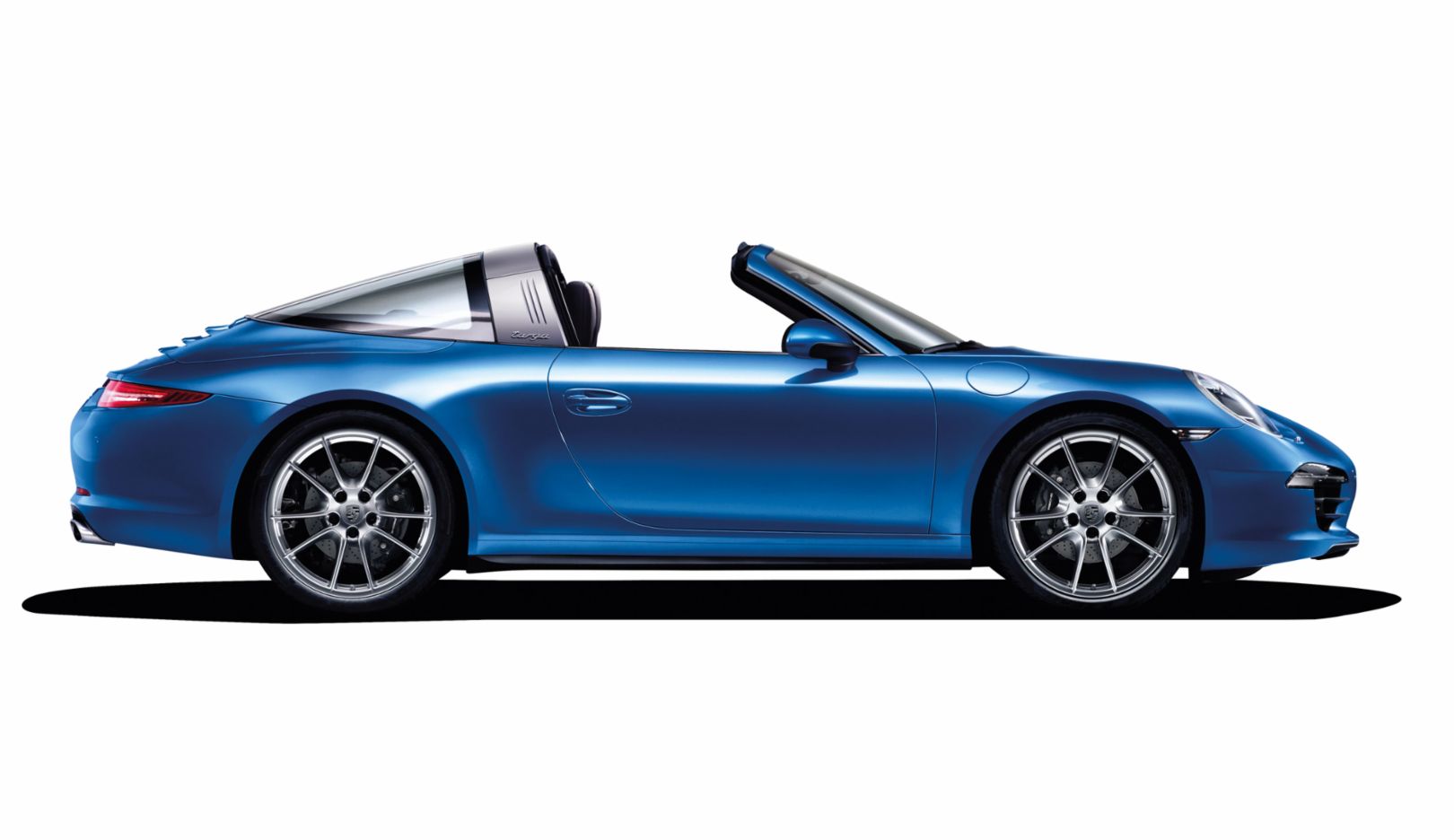
Maximum Diversity
Porsche celebrates the premiere of the new generation at the LA Auto Show in 2018 – with more 911 diversity than ever before. The Coupé, Cabriolet, and Targa are introduced as S, T, and GTS models over time. In 2020, Porsche presents the first of four planned collector’s variants in the form of the 911 Targa 4S Heritage Design Edition, which is based on the 911 Targa 4S with a powerful 331 kW (450 PS; 911 Targa 4S (2023): Fuel consumption* combined (WLTP) 11.1 – 10.4 l/100 km, CO₂ emissions* combined (WLTP) 252 – 236 g/km, CO₂ class G ) twin-turbo engine. The look of the interior and exterior echo the appearance of vehicles from the 1950s. Porsche breaks new ground with the 911 Dakar (image) in 2022. The limited special model combines a high-performance sports car with the off-road capabilities of an SUV. Porsche presents the 911 S/T in 2023 to mark the anniversary. The puristic, lightweight 911 is powered by the engine of the GT3 RS. A badge with the “60 Jahre 911” (60 Years of 911) logo adorns the radiator grille.
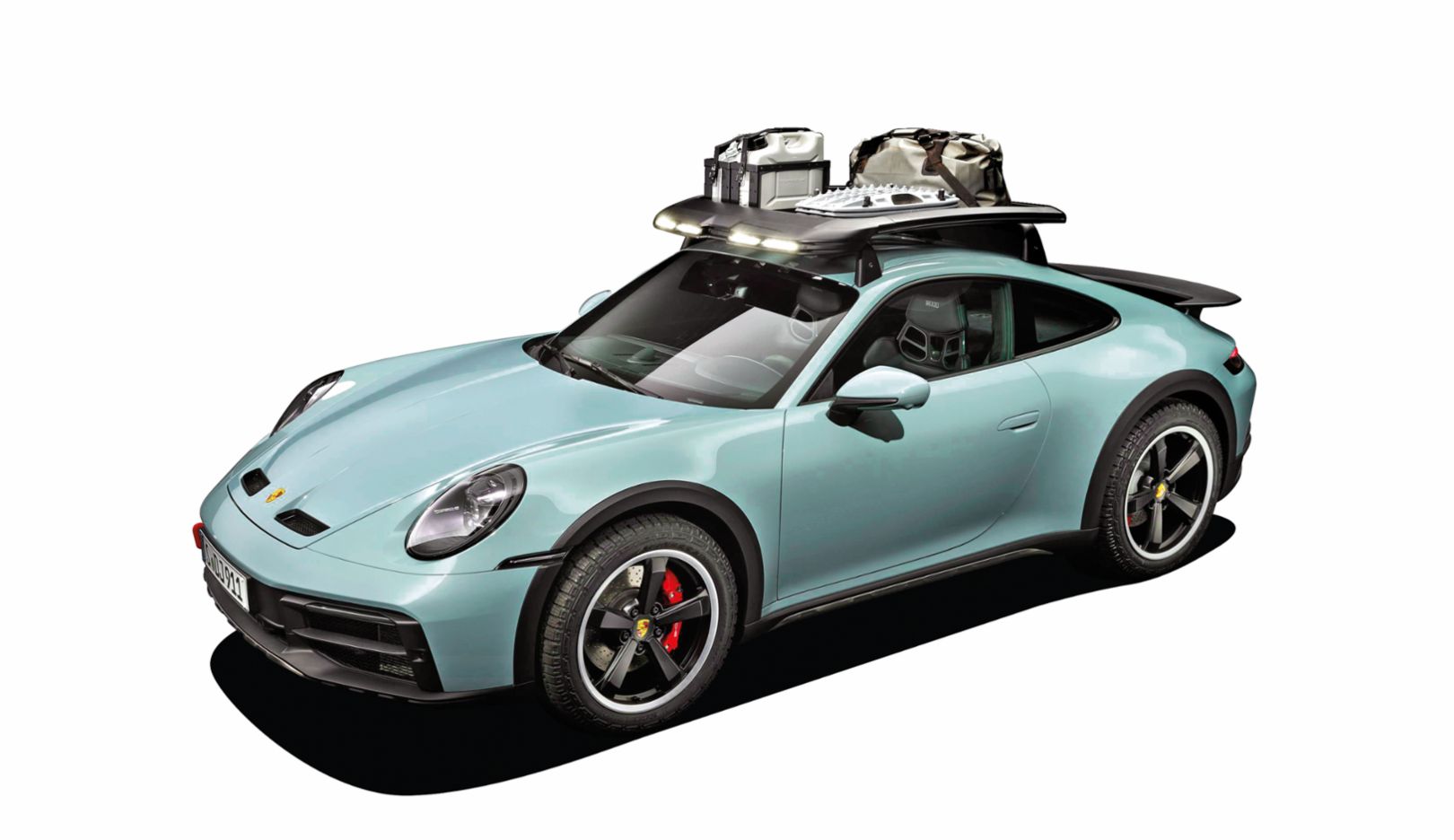
Consumption data
911 GT3
911 GT3 RS
-
13.2 l/100 km
-
299 g/km
-
G Class
-
G Class
Taycan Turbo GT
-
21.2 – 20.5 kWh/100 km
-
0 g/km
-
A Class
